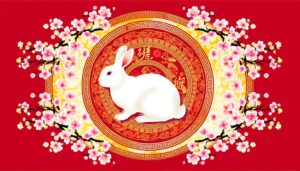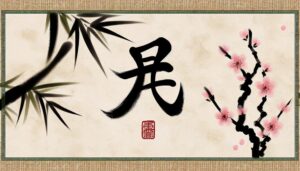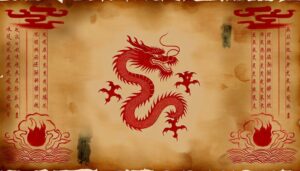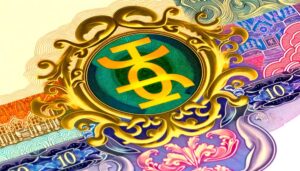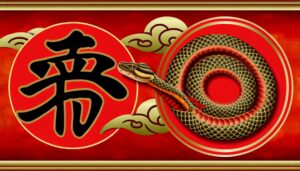What Chinese Symbol Looks Like a House?
The Chinese character 家 (jiā) intriguingly resembles the structure of a house. This pictograph historically signifies both a physical household and the concept of family within Chinese culture.
The top element, 宀, symbolizes a roof, encapsulating the idea of shelter, while the bottom element, 豕, represents a pig, traditionally a sign of prosperity and sustenance in ancient agrarian societies. Beyond its visual appeal, 家 carries profound cultural significance, epitomizing protection, unity, and stability in the family unit.
Exploring deeper, you will uncover its rich interplay across language, art, and social customs.
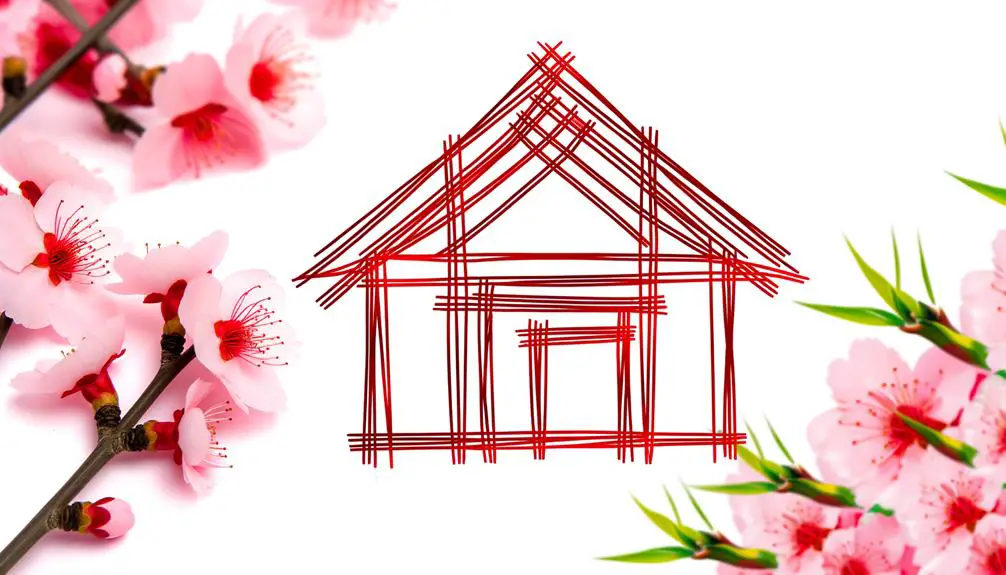
Key Takeaways
- The Chinese symbol 家 (jiā) represents both a physical house and the concept of family.
- It consists of 宀 (roof/house) and 豕 (pig/livestock), symbolizing prosperity and shelter.
- 家 (jiā) embodies unity, belonging, and Confucian values of familial harmony.
- The symbol is used in compound words like 家庭 (jiātíng) to denote 'family' or 'household.'
- In art, it reflects stability, heritage, and societal values, appearing in both traditional and contemporary works.
Historical Background
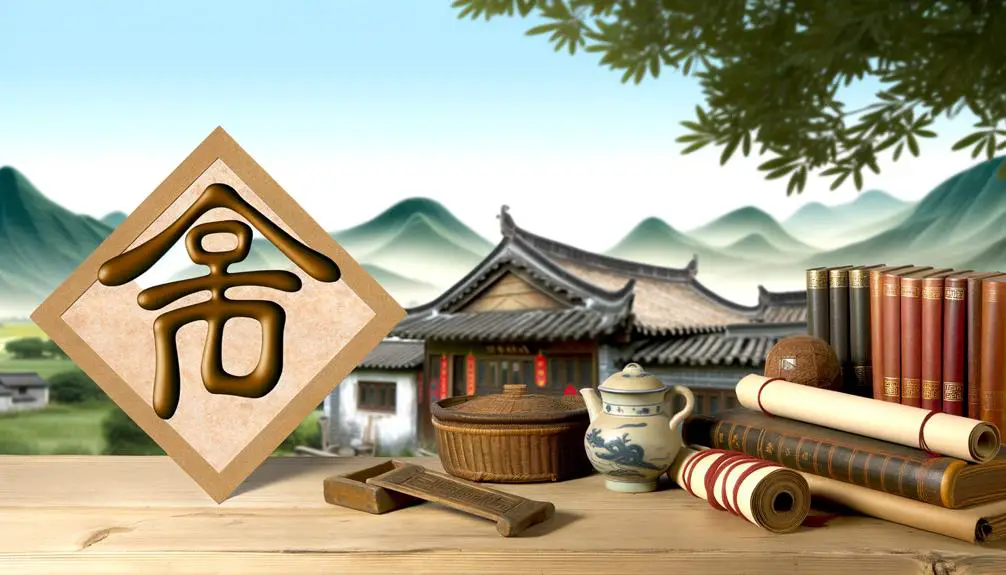
The Chinese symbol that resembles a house, 家 (jiā), has a rich historical background that dates back to ancient Chinese civilization and reflects the cultural significance of family and domestic life in traditional Chinese society.
This character is composed of two elements: the radical 屋 (wū), meaning 'roof' or 'house,' and 真 (zhēn), signifying something precious or genuine. The combination of these elements underscores the ancient Chinese view of the home as a place of safety and authenticity.
Historically, the home was the nucleus of social structure, serving as a central unit for economic, educational, and religious functions. This character's evolution illustrates the emphasis placed on familial bonds and the household's pivotal role in societal stability and continuity.
Symbolic Meaning
Building upon its historical background, the Chinese symbol 家 (jiā) embodies profound symbolic meaning, representing not only the physical structure of a house but also the intangible essence of familial harmony, unity, and belonging.
In Chinese culture, 家 transcends its literal translation, becoming a central concept that binds individuals through shared values and mutual support. This symbol reflects the Confucian ideal of filial piety and the hierarchical structure of traditional Chinese family life.
It underscores the importance of collective well-being over individual pursuits, illustrating how personal identity is interwoven with family and community. Consequently, 家 serves as a powerful emblem of cultural continuity, social stability, and the enduring significance of familial bonds in Chinese society.
Visual Elements
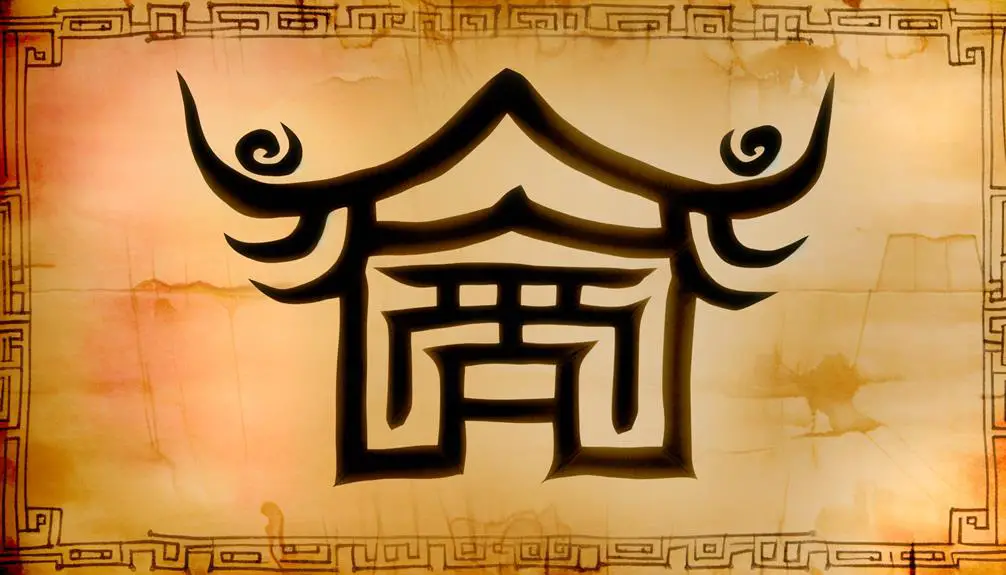
Examining the visual elements of the Chinese symbol 家 (jiā), one can observe a distinctive structure that intricately combines pictographic and ideographic components, reflecting its rich cultural and historical significance. The character is composed of two primary elements: 宀 (mián), representing a roof or house, and 豕 (shǐ), denoting a pig. This juxtaposition emphasizes the traditional agrarian lifestyle, where the home and livestock were central to daily life.
| Element | Meaning |
|---|---|
| 宀 | Roof/House |
| 豕 | Pig/Livestock |
The overall composition illustrates a sanctuary where both humans and animals coexist, symbolizing prosperity and familial warmth. This visual interplay underscores the character's multifaceted nature, encapsulating both shelter and sustenance within a single ideogram.
Cultural Significance
Rooted in ancient agrarian society, the Chinese symbol 家 (jiā) encapsulates profound cultural significance, representing the fundamental concept of family and home in Chinese tradition.
This character, visually reminiscent of a house with a pig beneath its roof, underscores the centrality of the household unit and livestock to agrarian life. It embodies Confucian values, emphasizing familial hierarchy, filial piety, and social harmony.
Historically, the home was the nucleus of one's existence, providing not only physical shelter but also emotional and moral grounding. The concept of 家 extends beyond immediate family, incorporating ancestors and future generations, thereby fostering a sense of continuity and responsibility.
This symbol reflects the deeply ingrained importance of family in shaping individual and societal identities in Chinese culture.
Usage in Language
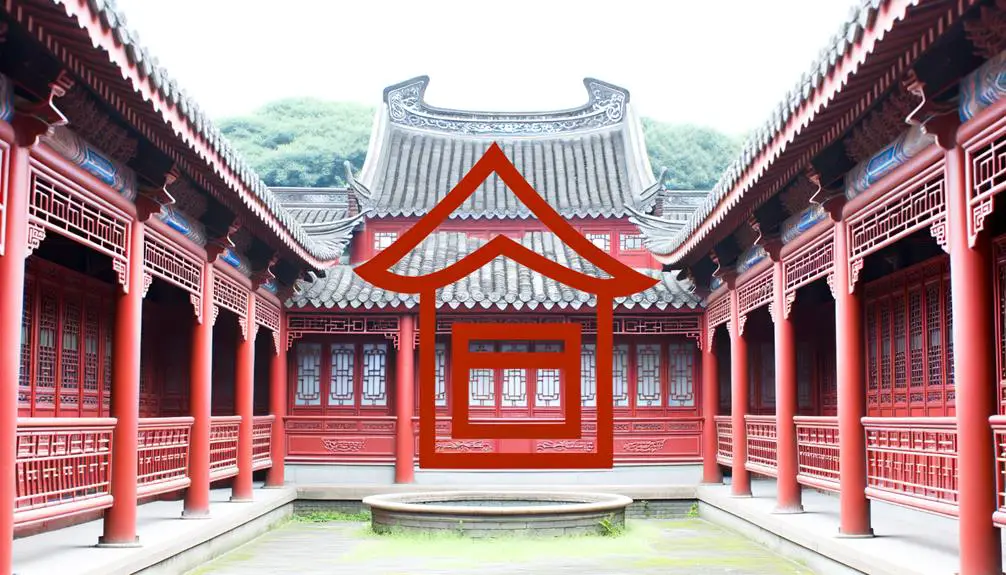
The character 家 (jiā), with its rich cultural connotations, permeates the Chinese language through numerous idiomatic expressions, compound words, and proverbs, illustrating its integral role in communication and thought.
For instance, the compound word 家庭 (jiātíng) denotes 'family' or 'household,' emphasizing the character's association with domestic life.
In idiomatic expressions such as 家喻户晓 (jiā yù hù xiǎo), meaning 'known by every household,' the character underscores the ubiquity and importance of shared knowledge within a community.
Proverbs like 家和万事兴 (jiā hé wàn shì xīng), translating to 'a harmonious family leads to prosperity in all things,' reflect deep societal values.
The character 家 (jiā) serves as a cornerstone in expressing fundamental concepts within Chinese culture.
Modern Interpretations
In contemporary China, the character 家 (jiā) continues to evolve in significance, reflecting both traditional values and modern societal dynamics. Historically symbolizing 'home' and 'family,' 家 now encapsulates broader concepts such as national identity and collective belonging.
The rapid urbanization and technological advancements have transformed the physical and metaphorical constructs of home, prompting new interpretations. Modern architecture and interior design often incorporate 家 to evoke a sense of nostalgia and cultural continuity.
Additionally, the character permeates digital communication, appearing in social media and virtual spaces to foster community spirit. Therefore, 家 remains a poignant symbol, bridging the past with present realities, and adapting to the complexities of contemporary Chinese life.
Similar Characters
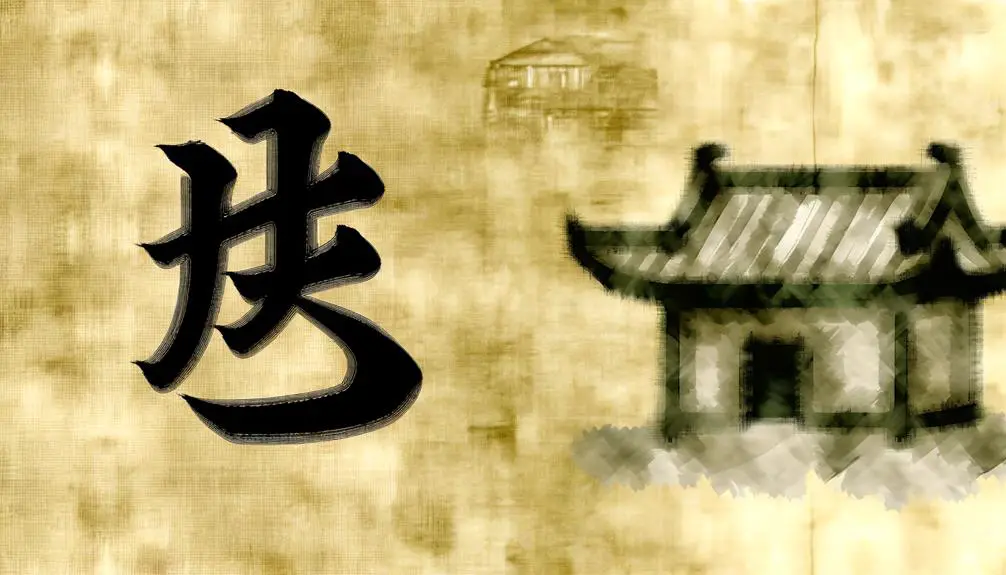
In exploring characters commonly mistaken for the symbol resembling a house, it is essential to highlight both their shared visual traits and subtle distinctions.
Characters such as '宀' (mián) and '家' (jiā) often cause confusion due to their structural similarities, yet their contextual usage and specific strokes set them apart.
A detailed analysis of these differences not only enhances comprehension but also aids in accurate interpretation within various texts.
Common Confused Symbols
Among the array of Chinese characters, several symbols resemble one another closely, often leading to confusion for learners and even seasoned speakers.
For instance, the characters 家 (jiā, meaning 'house') and 宅 (zhái, meaning 'residence') share a similar roof-like radical, yet convey distinct meanings.
Additionally, characters like 室 (shì, meaning 'room') and 宮 (gōng, meaning 'palace') also bear resemblances, particularly in their structural components.
Such similarities necessitate careful attention to context and subtle variations. Misinterpretation can arise from overlooking these nuances, as each character, despite visual similarities, encapsulates unique semantic and phonetic elements.
Understanding these common confused symbols is essential for accurate comprehension and communication in the Chinese language.
Visual Differences Explained
Discerning the visual differences between similar Chinese characters requires a detailed understanding of their individual radicals and strokes.
For instance, the character 家 (jiā), meaning 'house' or 'home,' is often confused with 宀 (mián), which denotes a roof. The radical 宀 appears at the top of 家, symbolizing shelter. Additionally, 家 includes the character 豕 (shǐ), representing a pig, historically indicating wealth within a household.
Conversely, characters like 宋 (sòng) and 宏 (hóng) also utilize 宀 but differ in their lower components, signifying “surname” and “grand” respectively.
This nuanced differentiation underscores the importance of precise stroke and radical recognition in distinguishing characters, thereby facilitating accurate comprehension and usage in both reading and writing Chinese script.
Symbol in Art
Throughout history, numerous artists have incorporated the Chinese symbol resembling a house into their works, imbuing it with rich cultural and philosophical significance. This symbol, often interpreted as a representation of stability and familial harmony, finds its place in various art forms, from traditional paintings to contemporary installations. The harmonious structure of the house symbolizes the Confucian ideal of societal order and familial duty. Artists like Xu Beihong and Wu Guanzhong have used this symbol to explore themes of heritage and identity.
| Artist | Art Form | Cultural Context |
|---|---|---|
| Xu Beihong | Traditional Painting | Confucian ideals |
| Wu Guanzhong | Contemporary Art | Heritage and Identity |
| Ai Weiwei | Installation Art | Sociopolitical Commentary |
| Feng Zikai | Cartoon Art | Everyday Life and Morality |
| Zhang Daqian | Landscape Painting | Nostalgia and Nature |
This symbol continues to resonate, bridging past and present cultural narratives.
Conclusion
The Chinese symbol resembling a house, rich in historical context and cultural significance, encapsulates a multitude of visual elements and symbolic meanings. Its usage in language and art reflects a continuum from ancient traditions to modern interpretations.
Despite potential objections regarding the oversimplification of its intricate design, the symbol's profound resonance within Chinese culture and its evocative representation of shelter and family underscore its enduring relevance, vividly illustrating the interplay between visual artistry and linguistic tradition.

